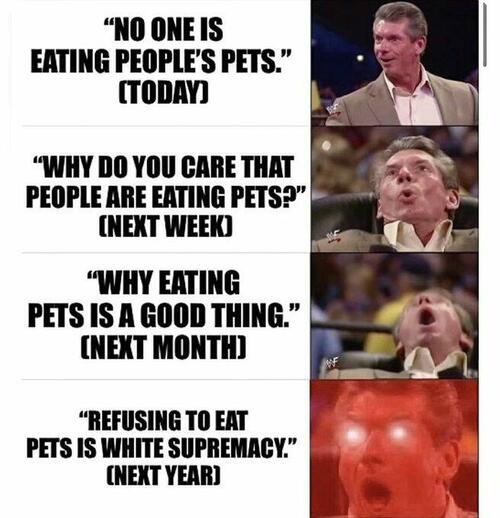Small Town Alabama Residents Silenced For Questioning Sudden Flood Of Haitian Migrants
This week U.S. Customs and Border Protection (CBP) released its latest statistics showing at least 530,000 migrants flew into the U.S. and were paroled into the country as part of the Biden administration’s controversial mass parole program for those migrating from Cuba, Haiti, Nicaragua and Venezuela (the CHNV program). The program essentially expedites the transfer of migrants from these countries with minimal vetting under refugee laws and allows them to stay in the US for at least two years with a work visa.
The CBP also notes that at least 800,000 more migrants have applied for the program at US ports of entry, meaning they are likely already in the country. The numbers are not counted as illegal border crossings. The CBP has warned that once the two-year work period ends they do not have the manpower to track down those migrants that refuse to leave voluntarily.
Concerns over this immigration agenda are being raised after presidential candidate Donald Trump highlighted the flood of 20,000 Haitians into Springfield, Ohio (a city of only 60,000 people) during his recent debate with Kamala Harris. Reports are mounting and suggest this issue is not limited to Ohio; small towns across the US are being inundated with third-world immigrants. Native-born residents feel powerless as their communities are trampled by decisions made at the federal level.
One such town is Sylacauga in Alabama with a tiny population of 12,236 people southeast of Birmingham. Reports indicate at least 2000 Haitian migrants have been dumped into the area with little or no communication with the locals.
Sylacauga city council member Laura Barlow Heath says she's worried Sylacauga will become the next Springfield. She criticized her colleagues after they abruptly shut down a council meeting when residents raised concerns over the overwhelming influx of migrants and she worries 'civil unrest' may be the result.
Citizens continued to approach council members after the meeting, and many of the exchanges became heated.
Mayor Jim Heigl confirms that the immigrants were brought in "legally" for employment. He said they have been "model citizens," and there are no issues with the current number of immigrants living in the city. However, this is the same rhetoric from the leadership in Springfield, Ohio, and reports from native residents conflict dramatically with the claims made by local politicians. They say crime is on the rise, and of course, pets are disappearing.
Evidence shows that animal abuse is indeed an issue. After the media claimed the accusations have been "debunked", police reports have been exposed and confirmed recordings of migrants in Ohio cooking cats have surfaced. A video of has surfaced of Springfield city officials from March of this year discussing migrants doing "horrible things to domesticated animals" while council members argued that the events are not confirmed.
NEW: African migrants in Dayton, Ohio caught grilling cats.
— Collin Rugg (@CollinRugg) September 14, 2024
The footage was obtained by @realchrisrufo who interviewed the man who took the video.
“It was some Africans that stay right next door. This African dude next door had the damn cat on the grill”https://t.co/YmmV79TKOn
Now we have the Springfield City Manager acknowledging on video that they’ve heard of complaints of domestic animals being eaten back in March.
— Dustin Grage (@GrageDustin) September 17, 2024
We also have a call report showing this.
Why would they lie about there not being complaints?
Unbelievable. pic.twitter.com/ejktkvxIRo
SHOCKING report from Rebel News’ @TheMenzoid, who visited Springfield, Ohio, reveals local residents sharing their stories of Haitian migrants killing pets and causing chaos in their city.
— I Meme Therefore I Am 🇺🇸 (@ImMeme0) September 13, 2024
“They did kill my daughter's cat.”
“My neighbor’s neighbor went over to his house crying… pic.twitter.com/5qBOsklaIe
Democrats assert that these communities have no say in the process of immigration and that however many foreigners arrive and where they come from is none of their business. But maybe it should be their business. Laura Heath of Sylacauga gets to the root of the problem:
“When is enough enough? When do they stop coming in? How many are there going to be? There’s no answers. We have none. The unknown and uncertainty is scary. We have 12,236 people in our community, and we just do not have the adequate resources to handle an influx of migrants. It’s going to take away from resources that are already struggling here.”
It should be noted that many of these migrants have been suspiciously relocated to deep red conservative districts and, as we recently witnessed in Oregon, some states are "accidentally" giving migrants voter status when they get their state IDs and drivers licenses.
Employers are incentivized to hire migrants because of lower wages, but they can also get tax subsidies for every refugee under a lesser known provision of the Work Opportunity Tax Credit (WOTC). In other words, companies are getting extra-cheap labor the more they add refugees to the payroll. This is why we often see corporate CEOs in places like Springfield, OH avidly defending mass immigration and denying any problems exist.
While the pet eating question has drawn national scrutiny to the issue, an even greater problem is the affordable housing shortage. With tens of millions of migrants entering the US in the past three years, demand has exploded and rent prices have skyrocketed. The gaslighting of the public continues, but the truth is slowly and surely rising to the surface.




